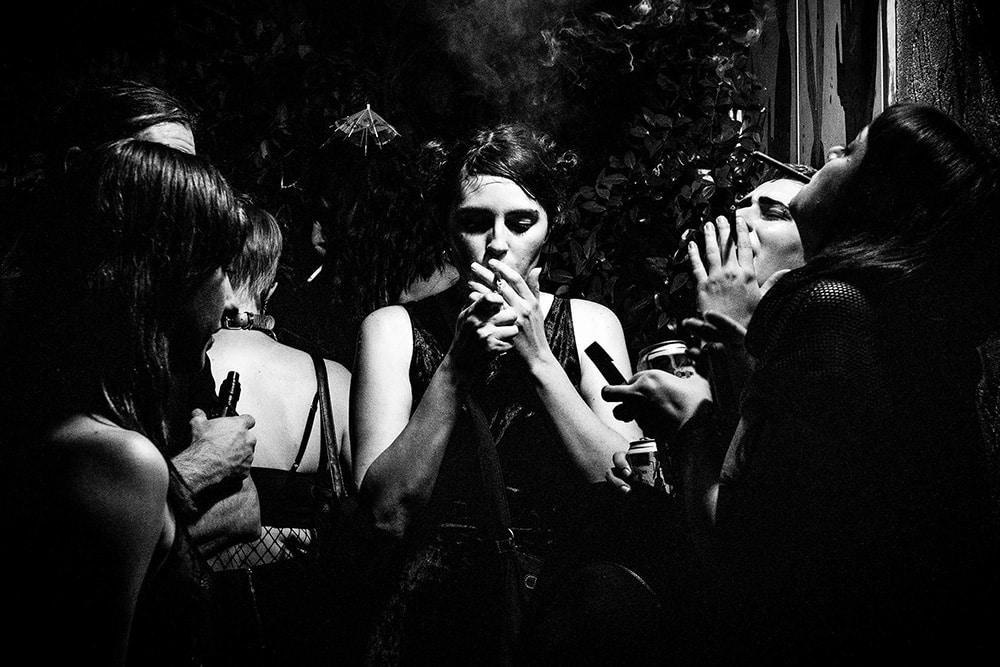
The Art of Darkness, John Robb‘s mammoth-sized collection of essays on the history of goth music, rivals anything by the works of Greil Marcus and Jon Savage concerning his exhaustive passion for his chosen topic. Spanning the margin of one of pop music’s most misunderstood subgenres, the Membranes’ bass player and author of Punk Rock: An Oral History (2006), endeavors to make serious weight on the matters concerning goth’s various styles and sounds. For the most part, he succeeds in his quantitative efforts, managing an impressive nearly 700-page study that spotlights goth greats like Siouxsie and the Banshees, the Cure, and Bauhaus while covering lesser-knowns like the Sisters of Mercy and Virgin Prunes.
Goth rock and pop, a music often backdoored by new wave’s then-trendier exploits, has had an equally rough and celebratory ride. A genre with a powerful visual component that often superseded the music, goth remains a mysterious outlier on the fringes of pop since its rise in the late ‘70s. Robb makes some compelling arguments on what makes goth more than just mere curio in the canons of popular music, not so much through an arching trajectory of its history but through chaptered blocks that focus on the talents and biographies of his selected artists.
Obvious picks like Siouxsie and the Banshees feature chapters stuffed with illuminating interviews with his subjects. Covering landmark albums like the Banshees’ The Scream (1978), Robb dissects the band’s blueprints admirably enough, offering insight into the many influences that shaped the Banshees’ debut, which would set the precedent for the goth-rock genre in the decade (the ‘80s) to come. Oddly, however, he skimps on what is arguably the genre’s beating heart: the Banshees’ fourth studio album Juju (1981), which brought together various elements that solidified an identifiable vision for goth-rock.
He does the same for the Cure, opting to focus on the band’s earlier work (1982’s Pornography) and not their watershed moment that was The Head on the Door (1985), an album that properly and rightly broke the band and goth music into the commercial pop market. This discussion could have explored the album’s wider influence on the American and British mainstream. Bauhaus gets similar treatment; only a few pages are dedicated to their early, important works (their first four albums). These omissions are somewhat disappointing for the most indebted fan of goth music who may wish to have delved deeper into the major works that defined an era born out of the punk movement. Indeed, so many threads seem to have been dropped by the wayside that Robb’s omissions are lamentable.
However, the author commendably corners the preliminaries that initially set the scene up, digging into the soil to examine the germinating seeds that spawned such triumphant works. Personal histories of the aforementioned artists are taken generously into account. He elicits some highly amusing and enlightening responses from various band members (e.g., Adam Ant discusses the press’ hatred for his then-predilection for S&M, while the Sex Pistols’ John Lydon reveals his initial meeting with Sid Vicious, who came at him with a knife). The Art of Darkness is bookended by a series of chapters that examine the cultural shifts in the 1960s psychedelic movement that gave way to punk in the 1970s, arching over into goth’s dying days in its closing chapter.
Most appreciative is the attention given to some of the more overlooked proponents of goth music. The Sisters of Mercy’s moody, danceable pop contains the shudders of goth but is often contested by many critics as not being a genuine goth act. Robb traces the band’s history and eruditely fashions an argument on their authentic roots in the subgenre. In a relatively short chapter, he ploughs the entailed history of Dublin’s the Virgin Prunes to explore yet another offshoot of goth that played up the genre’s more theatrical and visual components.
Overall, Robb’s work seems more of a primer (an invaluable one at that) to a work that would delve further into the landmark works that helped shape and distinguish goth as a musical culture in its own right. On its own, The Art of Darkness manages an estimable wealth of knowledge of goth, and Robb can feel secure that his work rests comfortably next to the likes of Marcus and Savage.
However, the extremely interested may like to supplement this tome with Cathi Unsworth’s take on the subject, Season of the Witch: The Book on Goth (2023), along with one of the earliest analyses on goth music, Gothic Rock: All You Ever Wanted to Know…But Were Too Gormless to Ask (1994) by Mick Mercer, the king of goth-rock dissertations.


![Call for Papers: All Things Reconsidered [MUSIC] May-August 2024](https://www.popmatters.com/wp-content/uploads/2024/04/all-things-reconsidered-call-music-may-2024-720x380.jpg)



